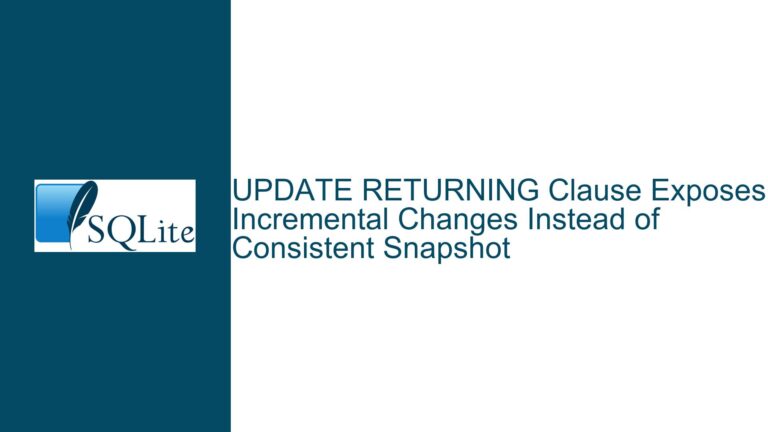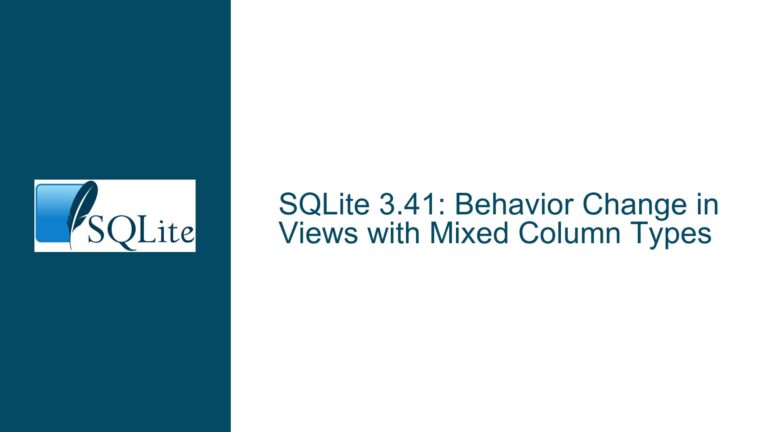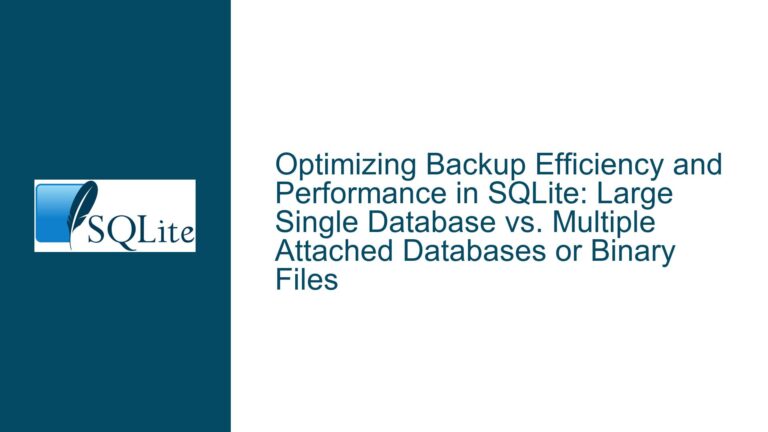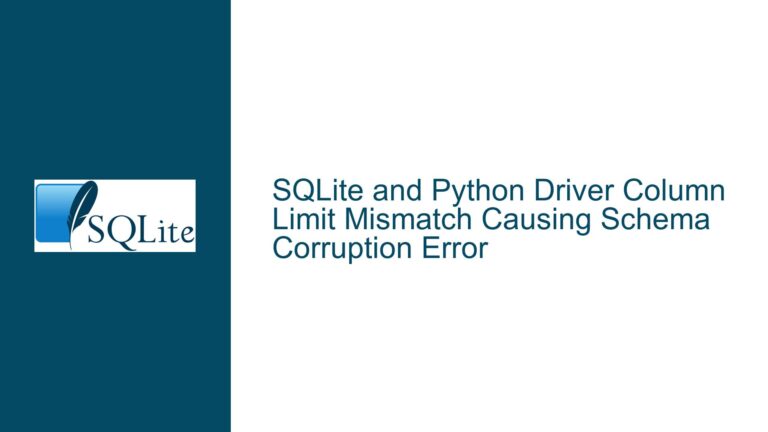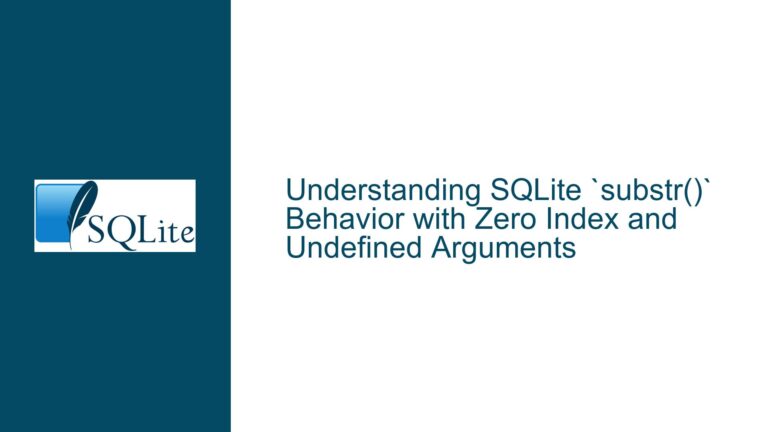UPDATE RETURNING Clause Exposes Incremental Changes Instead of Consistent Snapshot
Understanding the UPDATE RETURNING Clause’s Incremental Data Visibility Issue Overview: RETURNING Clause Reflects Intermediate Row States During Bulk Updates The core issue arises when using the UPDATE … RETURNING syntax in SQLite to modify multiple rows and return computed results based on the updated state of the database. Users expect the RETURNING clause to evaluate…
